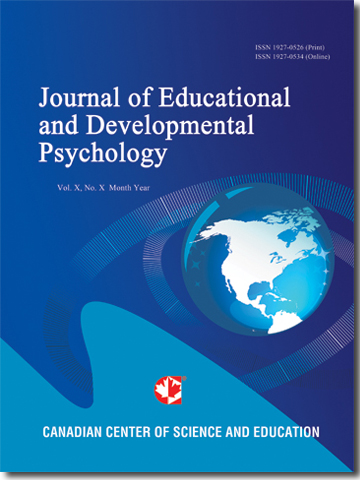Differences in Types and Technological Means by Which Mexican High Schools Students Perform Cyberbullying: Its Relationship with Traditional Bullying
- Angel Valdés Cuervo
- Ernesto Carlos Martinez
- Jesús Tanori Quintana
- Teodoro Wendlandt Amezaga
Abstract
The aim of this study is to determine the differences between types and technological means by which Mexican high school students perform cyberbullying. The effects to perform the role of aggressor and victim in the traditional bullying were also established in the intensity of the reports of cyberbullying. It was used a random cluster sampling with 278 students selected from four high schools, to which they were given two instruments designed expressly for measuring the frequency of types of cyberbullying and the use of technological means for its realization, as well as the frequency of bullying respectively. Results showed that denigration, harassment and exclusion were reported significantly more strongly than the other types of cyberbullying, and that the most frequently used technological medium were social networks. It was also found that performing the role of aggressor (R2=.44) or victim (R2=.37) explained a significant portion of the variance of cyberbullying reports. It was concluded that cyberbullying is a phenomenon that can take various forms and it is related in a complex way with traditional bullying.
- Full Text:
 PDF
PDF
- DOI:10.5539/jedp.v4n1p105
Journal Metrics
(The data was calculated based on Google Scholar Citations)
1. Google-based Impact Factor (2021): 1.11
2. h-index (December 2021): 29
3. i10-index (December 2021): 87
4. h5-index (December 2021): N/A
5. h5-median (December 2021): N/A
Index
- Academic Journals Database
- CNKI Scholar
- Copyright Clearance Center
- CrossRef
- Elektronische Zeitschriftenbibliothek (EZB)
- EuroPub Database
- Excellence in Research for Australia (ERA)
- Harvard Library
- Jisc Library Hub Discover
- JournalSeek
- JournalTOCs
- LIVIVO (ZB MED)
- LOCKSS
- MIAR
- Open Access Journals Search Engine(OAJSE)
- PKP Open Archives Harvester
- Publons
- ROAD
- Scilit
- SHERPA/RoMEO
- Standard Periodical Directory
- Stanford Libraries
- Technische Informationsbibliothek (TIB)
- UCR Library
- UoB Library
- WorldCat
- Zeitschriften Daten Bank (ZDB)
Contact
- Carol WongEditorial Assistant
- jedp@ccsenet.org
